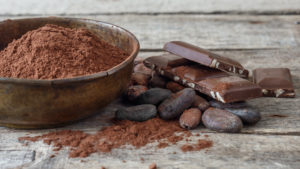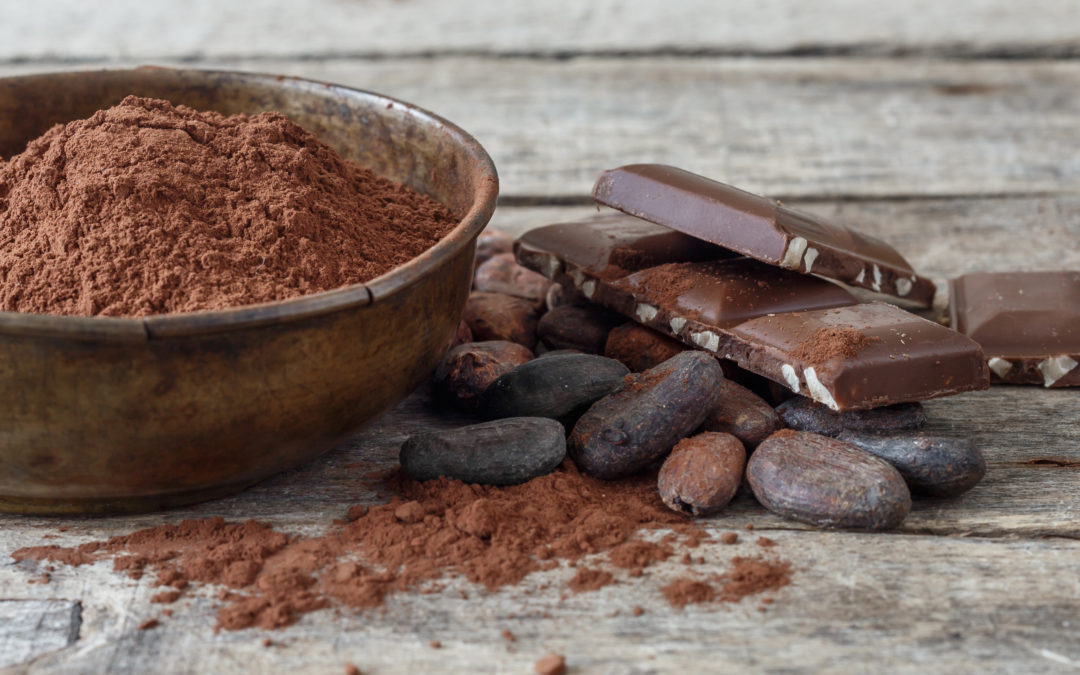Cocoa is food with a unique flavor and aroma. It is used in many food products to accentuate flavor and color. The natural properties of cacao are traditionally associated with feelings of well-being and energy.
The European world discovered the chocolate by Christopher Columbus in 1504. Years later, the Spanish conquistador Hernán Cortés used chocolate as an essential component of the diet of their soldiers because it provided energy, mental focus, strength, and sense of wellbeing. Cortés also contributed to knowledge of cocoa in Europe through his Letters of Relation, the communications that Cortés maintained with the Emperor Charles V. The five Letters of Relation were written between 1519 and 1526, the years in the life of Cortes, corresponding to the formation of New Spain and his designation as the first governor in 1522.
These letters described the journey of Cortez to Mexico, his arrival in Tenochtitlan, capital of the Aztec Empire, the description of the new lands and its inhabitants, the explanation of alliances, wars, and other political and military of the campaign of conquest.  In one of the letters Relationship, Cortés described flora and fauna of the lands visited and wrote to Emperor Charles V that: «a single cup of this beverage strengthens both the soldier that he can walk all day without taking any other food.”
In one of the letters Relationship, Cortés described flora and fauna of the lands visited and wrote to Emperor Charles V that: «a single cup of this beverage strengthens both the soldier that he can walk all day without taking any other food.”
Although the first shipment of cocoa beans to Spain took place in 1528, the consumption of chocolate began in the late XVI century. Initially, the highest social classes took the chocolate beverage. From the XVII century, the consumption spread throughout Europe and from there to other continents.
The word cacao, cacahualt, comes from Nahuatl, the Uto-Aztec language. The cocoa tree is belonging Esterculiáceas family was classified by Linnaeus as Theobroma cacao L., which in Greek means «elixir of the gods». From the cacao seed is elaborate chocolate, or xocolatl, the word also originally from language Nahuatl.
There are several theories about the origin and domestication of cacao. Some of them consider that the first variety of this plant arose about 5,000 years ago in the Upper Amazon, near the Colombian-Ecuadorian border, on the eastern flanks of the Andes. According to this theory, the wild species was transported in prehispanic times by the ancient settlers to Mesoamerica where it was domesticated for use in rituals.
Then, once cacao had spread and domesticate through the Amazon Valley, the plant may have been carried by the Indians migration toward Central America and Mexico.
Scientific research on the properties of cocoa has intensified in recent years. Thus, studies of phytochemicals from Theobroma cacao L have recognized that the wonderful «elixir of the gods» is also a superfood of extraordinary healthful effects.
While it is true that today, cocoa is grown in several countries, cocoa traditionally cultivated and processed in its region of origin, is differentiated by its flavor and quality.
Cocoa is a rich source of flavonoids, flavanols polyphenols, procyanidin, catechin, epicatechin, and theobromine, among other healthy components. Cocoa has the maximum levels of flavonoids, higher than even tea and wine. Particularly, flavanols consist of the monomers epicatechin and catechin plus oligomers of epicatechin and catechin which are known as procyanidins. They have been associated with cardiovascular health. Several clinical trials have been carried out to investigate the potential health benefits of chocolate. They have shown a positive outcome for chocolate as a cardioprotective agent. A study, have concluded that the daily consumption of dark chocolate could be an effective cardiovascular preventive strategy in patients with metabolic disease.
Another important property of cocoa is its anti-stress effect. Several bioactive compounds in chocolate improve alertness and alleviate stress due significantly promoting serotonin production which is a calming neurotransmitter.
References
- Lee KW, Kim YJ, Lee HJ, Lee CY. Cocoa has more phenolic phytochemicals and higher antioxidant capacity than teas and red wine. J Agric Food Chem. 2003;51:7292-5.
- Walcutt DL, Chocolate and Mood Disorders. PsychCentral; 2009. Available at: http://psychcentral.com/blog/archives/2009/04/27/chocolate-and-mood-disorders/.
- Zomer E, Owen A, Magliano DJ, Liew D, Reid CM. The effectiveness and cost effectiveness of dark chocolate consumption as prevention therapy in people at high risk of cardiovascular disease: best case scenario analysis using a Markov model. BMJ. 2012; 344:e3657.
- Keen CL, Holt RR, Oteiza PI et al. Cocoa antioxidants and cardiovascular health. Am J Clin Nutr. 2005; 81(suppl): 298S–303S.
- Kerimi A et al. The cardiovascular benefits of dark chocolate. Vascular Pharmacology. Volume 71, August 2015, Pages 11-15

